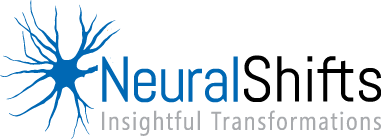Several years ago, I worked for an organization that was male-dominated and I felt the need to bring women into the organization. It was a hard job since for every twenty-five male applicants there was one female applicant, clearly, we had a diversity issue. There was not a lot of flexibility since I was instructed to recruit only from the top ten MBA programs in the nation and Top four management consulting firms.
To compound the issue, I experienced second-generation gender bias meaning I was applying work practices that appear neutral but were geared to supporting male dominated environments. As I interviewed women, I couldn’t help but feel at odds with the way they responded to my questions compared to their male counterparts. Their answers felt abrasive, too direct and almost rude. After interviewing women, I interpreted their behavior as egotistic and entitled and my bias categorized them as a not fit for the company culture since we had zero tolerance for arrogance and big egos. Despite my uneasiness, I put them through the hiring process and crossed my fingers they would be accepted into the old boy network based on their qualifications. Many times, they were declined after interviews with others. In some way, I can’t help to wonder how this outcome solidified my confirmation bias that the women’s behavior was not a fit for our organization.
In retrospect, it makes sense that the candidate pool I was accessing was small since I was recruiting from organizations that by designed were systematically biased toward women. I know my colleagues were suffering from the same unconscious bias since I heard them make inappropriate comments about women during meetings. During my tenure as an HR manager, I managed to hire two women. One woman lasted a few months and the second a full year. It was a small victory.
For a woman working in a male-dominated field, it is easy to feel helpless. I only wish that I had been exposed to the notions of unconscious bias and strategies to mitigate it before that time period. Here are a few strategies you can implement to start making a difference in your workplace.
Strategies for Diversifying your Candidate Pool
- Awareness: Recognize that we all experience biases because our brain is furiously processing information to allow us to make snap decisions. Be open to being uncomfortable when the person does not fit your framework and ask yourself: “Where does that come from? Is there data that supports or contradicts your judgments?” Invite employees to attend on a voluntary basis “unconscious bias training.”
- Processes: Set up structures that require the involvement of a diverse group of people to enable others to point out your blind spots. For instance, hiring or promoting decisions should rely on clear criteria, not one person’s opinion (A.K.A hiring manager or supervisor).
- Accountability: Hold yourself accountable for the impact your decisions have on other people’s lives. Set clear goals to hire a diverse group of people and provide incentives that reward goal attainment. E.g. Bonus payouts are attached to leaders’ ability to recruit and retain a diverse workforce.
Some firms have been successful at recruiting a diverse workforce but are struggling to retain them. What can you do to retain a diverse workforce?
Strategies for Improving Inclusion
- Shared vision: The brain’s primal center intuitively responds to outsiders with fear and puts them outside the group. On the other hand, our brain is a social agent and innately wants to be part of something bigger. To mitigate the biases, set a process to co-create a vision with your employees. Does your team have a compelling vision? Are they confident in their ability to deliver?
- Create spaces for open dialogue: Start by acknowledging that we are all biased and model the proper behavior. When is the last time you hosted an employee chat to talk about what it means to grow up as an African American, Latino, White, Gay…? How are all your employees experiencing their workplace? What is their perception of how safe it is to speak up?
- Celebrate differences: Are people recognized for bringing diverse talent into the organization? Or rewarded for going the extra mile to ensure diverse talent feels welcome and included? Do you showcase diverse group’s cultural strengths?
- Set the expectation for disagreement: Naturally, when teams are diverse, ideas will clash as various points of view diverge. Our brain quickly signals us to run to the comfort zone. Let employees know that you expect disagreement and give them the tools to appropriately manage conflict. Learn more about Neural Shifts conflict management training.
If you are serious about retaining a diverse group of people start by training your workforce on “unconscious bias.” Set processes in place to mitigate biases and more importantly be an inclusive leader. Start by co-creating with employees the culture and climate that fosters trust, open dialogue and rewards cognitive diversity. If you don’t’ have answers to the questions raised, reach out to Neural Shifts. We test psychological safety in teams and give you recommendations to create safe and inclusive workplaces.




0 Comments